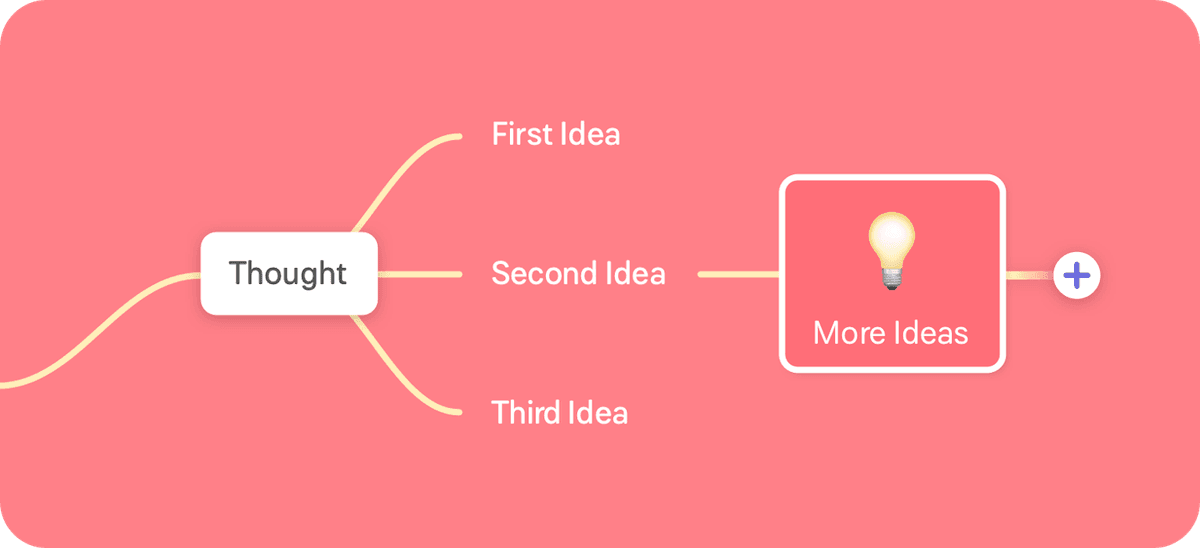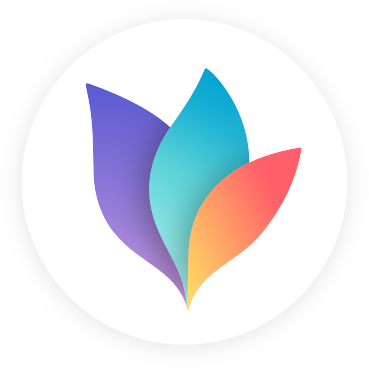What is Mind Mapping?
Mind mapping is a popular creativity technique. But what does a mind map actually look like? How should one be structured? And what tools help with its creation? Below, you will read all about mind maps.

What is a Mind Map?
A mind map is a creativity training method. Tony Buzan, British author, speaker, and trainer, is credited with the creation of the mind map. A mind map is used to write down and capture one’s thoughts, structuring them in pictures. This structuring of the content results in clusters and topic clouds, which can be seen as a “map” in their entirety.

What Does a Mind Map Help With?
Mind maps help you organize knowledge and information, allowing you to see their relation to one another. This allows you an overview of a topic and various subtopics. Writing a topic down makes it more visible and tangible. Subsequently, it becomes better to work through.
This technique stimulates your creativity and is a lot of fun. The only critical thing is to not set yourself any limits, so you really write down every idea. Even if it seems silly or trivial.
Basically, a mind map should get you out of your head and break your usual thought patterns.
Create a Mind Map in Three Steps
To create a mind map, you don’t need much: All you need is a sheet of paper (at least A4) or a white board and writing utensils & (different colored) pens. Or you can start right away with a software tool like MindNode. Then you go about it in 3 steps:
1. Define Your Main Thought
This first step isn’t the easiest. The goal is to define your central topic. To achieve this, you need to select your key term. Be sure that the term is open and broad enough to allow you to find further subtopics. The more detailed your key term is, the harder it will be to find subtopics. Write the term or draw a symbol or picture representing the topic in the center of your page.

2. Collect Further Thoughts
Here’s where it gets fun. Collect all the concepts that you can think of that relate to the central theme of your mind map. If these associations are still relatively open-ended, then they can have their own points under them, relative to the center points of the page. If you want to get really detailed, then keep building out under those points. Connect the points with their relevant overarching topics – that may be the central topic in the middle of the page or possibly another topic. The lines lend structure and order to the key term. You will see how this creates a tree where branches and connections come together, some of which you might not have noticed before.

3. Start Elaborating the Mind Map
If you really can’t think of anything else, you can lay your pen aside and take a breather. Then it’s time to elaborate on the mind map. In fact, this step is about recognizing and further elaborating on the connections you previously drew. It is also a time for revision that serves to regroup, highlight, and add terms as desired.

Optional: repeat and revise!
Under ideal circumstances, the mind map continues to grow like a tree, branching out further and further. You can also let the mind map sit for a bit longer before working on it again. Every so often you may lose the direction of your overview or new ideas will seem more important to you. If that happens, do not hesitate to revise the mind map or start over.
9 Important Layout Rules for Mind Maps
1. Layout
Place the paper horizontally and begin in the center of the page – or use an app.
2. Starting Point
Use a picture or sketch as the central starting point.
3. Colors
Use different colors.
4. Connect
Connect the main branches with the central picture, and then branch from those.
5. Go With the Flow
Shape the branches so they curve, organic and flowing. The width of the branches should decrease towards the outer ideas.
6. Step By Step
Use only ONE key term to work outward from.
7. One by One
Use only one concept per line.
8. Your Design
Develop your own personal mind mapping style.
9. Hierarchy
Use a star-shaped hierarchy, numbers, and geometric boundaries.
Get MindNode
Download MindNode now and start exploring your ideas in a whole new way.













